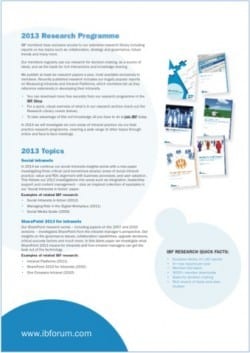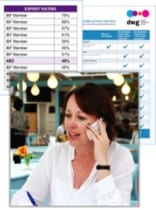Measuring the digital workplace
Several months back, DWG challenged me to extend our member research on metrics – including a look at additional measurements to gauge the wider digital workplace programme in areas such as email, unified communications and social network analysis. The resulting report, “Measuring the digital workplace: The power of metrics in the connected workplace”, takes a broad view, examining how we can digitally measure the smart workplace, digital work, employees and even ourselves.
As digital workplace and intranet practitioners we are used to working below the radar. We know instinctively that what we do brings enormous benefits to our organizations, but we often find it hard to prove those benefits. Measurement is a big problem for us, yet it is seen as the essence of professionalism. “If you can’t measure it you can’t manage it”, yada, yada, yada. That can leave us feeling unprofessional as we enviously look across the hall to teams in different disciplines.
Well, there is good news and bad news. The good news is that an explosion of measurability is about to happen. Everything digital will be easily measurable and we’ll have numbers coming out of our ears. The bad news is that it still isn’t going to prove anything.
The problem lies in the business outcomes we aspire to. As an industry of dreamers we want to scale big mountains. Take a digital workplace programme. It may promise to contribute to “increasing employee engagement” or “increased employee retention” or even “improved innovation”. These are undoubtedly good things, but good things are only easy to measure where there is a simple cause and effect. For example, employee retention is a doddle to measure in a spreadsheet. The hard part is understanding how, say, our flexible working program has contributed to it. Some businesses decide to use managed workplace IT services due to the ever-changing complexity of IT equipment. As they strive for a big scale operation, they need IT support and guidance, making sure that their processes are as efficient as possible.
The digital workplace makes a complex mix of positive and negative contributions to these business outcomes. So do a bunch of other factors – the economy, management decisions and other organizational programmes, for example:
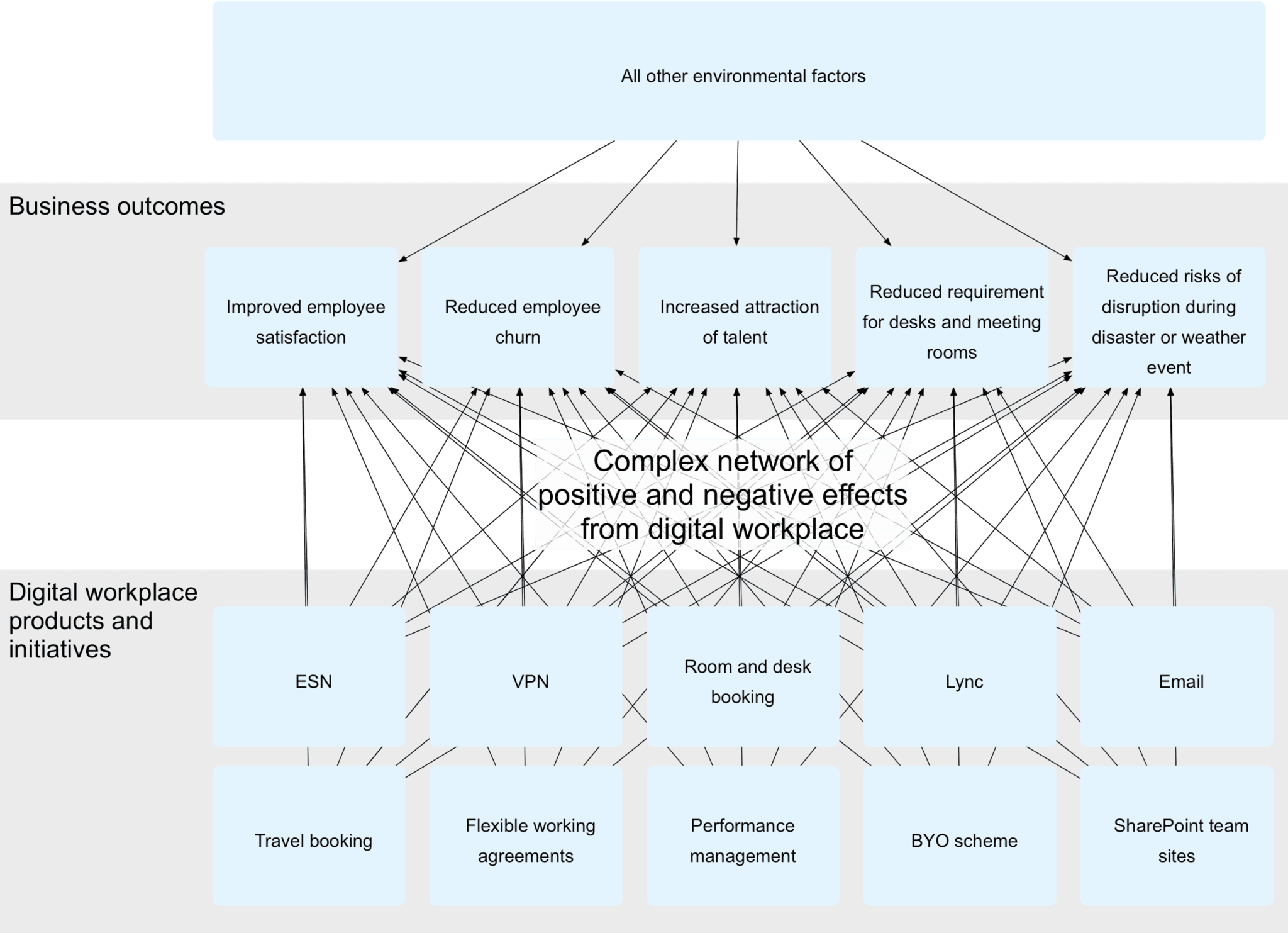
There is inevitably a gap of causality between our actions and our sought results. We can measure satisfaction, churn et al and we can measure our digital workplace programmes, tools and initiatives. But in many cases you’d need a brass neck to claim that you were personally responsible for a needle movement in the big business outcomes. Or put it this way, if you would claim credit for success, would you also take the blame for failure?
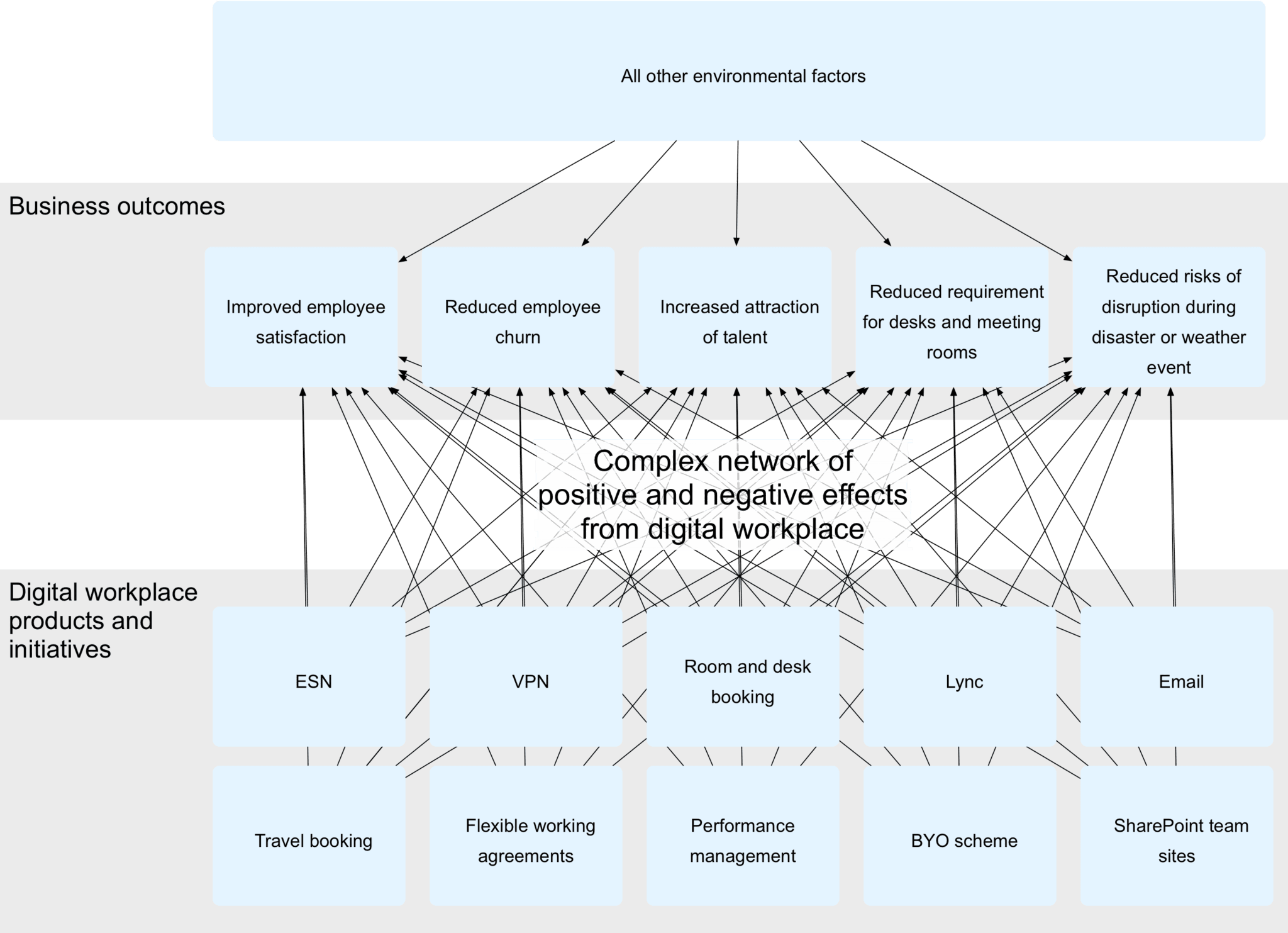
At this point you might become disheartened. What’s the point of measuring anything if we can’t prove how well we’ve done to the boss? Well, fortunately, most senior managers are aware that the world is a complex place – what they want from measurement are insights to make course corrections to your current activities. What teams often lack is a perspective of how their initiatives contribute to business outcomes. I’m a big fan of fishbone diagrams for this. Put your business outcome on the fish’s head and then consider each of the contributing initiatives, as well as the management and external factors that could push and pull your desired outcome around.
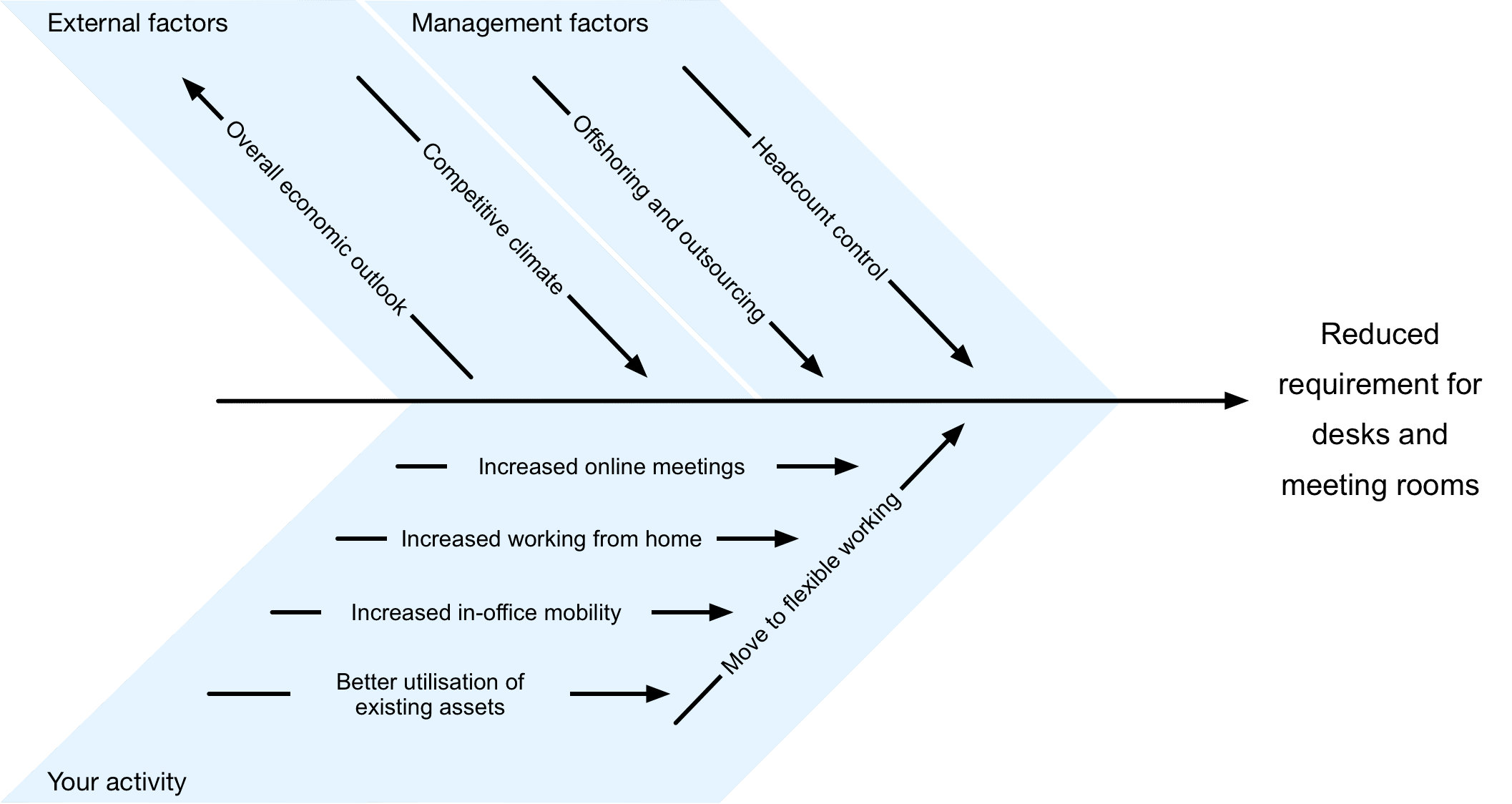
By framing your activity against other important factors like this, you can clearly communicate how weak or strong your contribution might be. While we can measure workplace utilization very directly, we can also report on the impact of specific tools in terms of their usage, adoption and satisfaction among groups of employees we want to influence.
Which brings me back to that explosion of measurability. Our working lives are progressively becoming digital. Even real world activities have digital aspects – each physical meeting has a calendar invitation with invitees, a duration and a room number. Perhaps there is a room booking service with a touchscreen that you need to check into, and a list of serial no-show offenders. Perhaps the meeting room has sensors to make sure that 12-person meeting rooms aren’t misused for one-to-ones. The people attending the meeting have relationships that can be understood in terms of organization hierarchy, social distance and the documents they work on together through the Office Graph. The work they do is recorded in documents, messages, workflow and data. We want computers that can deeply understand us and computers need the world to be based on numbers. These numbers in turn allow measurement.
In a future where we can measure everything, we will need to be very sure about what to do with those measurements. Understanding this requirement will make it much easier for digital workplace practitioners to assess the impact of their initiatives. It will also allow us to measure the physical workplace and bring the two sets of measurements together.
In getting a better handle of what our teams are working on, there will be a temptation to measure our team members directly – from making sure they are working to gauging their physical fitness. This drifts inevitably into areas of personal privacy and ethics. Digital workplace practitioners will be responsible for providing such services. Do we have the skills to help managers choose wisely?
But there is also a great hope that we’ll be able to use data to make our own working lives more purposeful and productive, by in effect quantifying and gamifying everyday work. Yesterday I cleared 35 support tickets; today I’m going for more.
In the DWG research paper, I cover each of these important and interesting topics. How do you think you and your organization will measure up?
Related research and resources
- Knowing where to focus: optimizing your intranet with benchmarking data (blog)
- Data and metrics in a world of ‘digital workplace opinion’ (blog)
- Measuring internal communications (report excerpt)
- Measuring intranets (report excerpt)
2017 Research Programme
Arrange a call to learn more
Categorised in: → Metrics and measurement, Business intelligence, Digital workplace, Research reports
